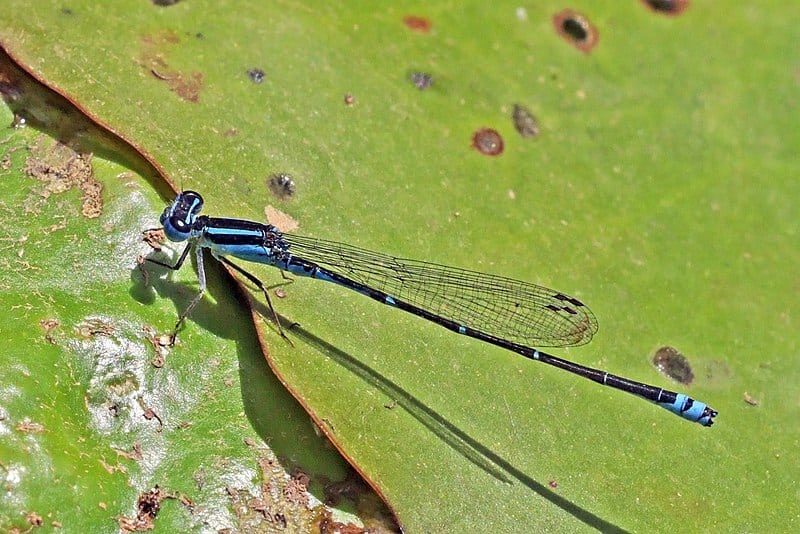Socotra Bluet Facts
- The term of Socotra Bluet represents one of the common names for a remarkable variety of damselfly. The marvelous insect also remains known to some people by another term. In some parts of its range the invertebrate is known as the Grant’s bluet.
- Entomologists, though, know this small wonder of Nature better by the scientific name of Azuragrion granti. Regardless of the name one uses for it, however, this creature stands out from its many related species, though not always for enviable reasons.
- Unfortunately, researchers currently do not know a great deal about the life of this beautiful arthropod. This lamentable lack of information occurs mainly due to the relative remoteness and extremely inhospitable nature of its habitat.
- Although it appears to be locally abundant, the IUCN currently lists the invertebrate as Near-Threatened, due to a combination of factors. This status further appears on the organizations Red List of Threatened Species, which it continually updates.
- Given the nature and scarcity of its native habitat and range, the species also faces several threats to its continued existence as a species. Habitat loss also obviously constitutes a great danger, but its greatest threat consists of climate change.
- Considering the various difficulties involved, very few photos of this insect understandably exist at all, let alone ones of good quality. As a result, only the first image used in this article is of the Socotra Bluet. The rest consist of related creatures.
Related Articles
Red Veined Darter
Socotra Bluet Physical Description
Much like the related species shown above, the Socotra Bluet also typically achieves a comparatively moderate size for those of its Family. This particular species, however, unlike some others, does not display any noticeable degree of sexual dimorphism.
Adults of both genders typically attain a highly respectable size, especially compared to other members of its Family. An average mature adult commonly attains a body length of about 3 in (7.6 cm), and also possesses a wingspan averaging around 5 in (12.7 cm).
The body of the Socotra Bluet also evolved as extremely elongated, and primarily displays a light blue color, with scattered black markings in various locations. Interestingly, the narrow and virtually transparent wings remain held vertically when the insect sits at rest.
- Kingdom: Animalia
- Phylum: Euarthropoda
- Class: Insecta
- Order: Odonata
- Family: Coenagrionidae
- Genus: Azuragrion
- Species: A. granti
Socotra Bluet Distribution, Habitat, and Ecology
The known native range of the remarkable Socotra Bluet also remains extremely limited. The marvelous damselfly further appears to only live in one location in the entire world, which severely limits its chances to survive at all, let alone to expand its range.
Incredibly, this tiny yet remarkable marvel of Nature seems to only live on the eastern portion of one island. That location’s the tiny island of Socotra, legally a part of Yemen. Geographically, though, the location remains considered as a part of Africa.
Even within this extraordinarily limited zone of habitation, the delicate-winged wonder does not make just any area its home. This amazing creature further seems to only inhabit lakes, ponds, marshes, and rivers, since it appears to breed in moving water.
Returning to the lack of detailed information, researchers have no confirmed information pertaining to the diet of the Socotra Bluet. However, it remains assumed that its food source consists of various tiny local insects, in keeping with the pattern of others of its kind.
Species Sharing Its Range
Check out our other articles on 5 Rare Mind-Blowing Cloud Types, Jellyfish Tree, Eastern Diamondback Rattlesnake, Cano Cristales, Indian Giant Squirrel, Little Penguin, Evening Cicada

